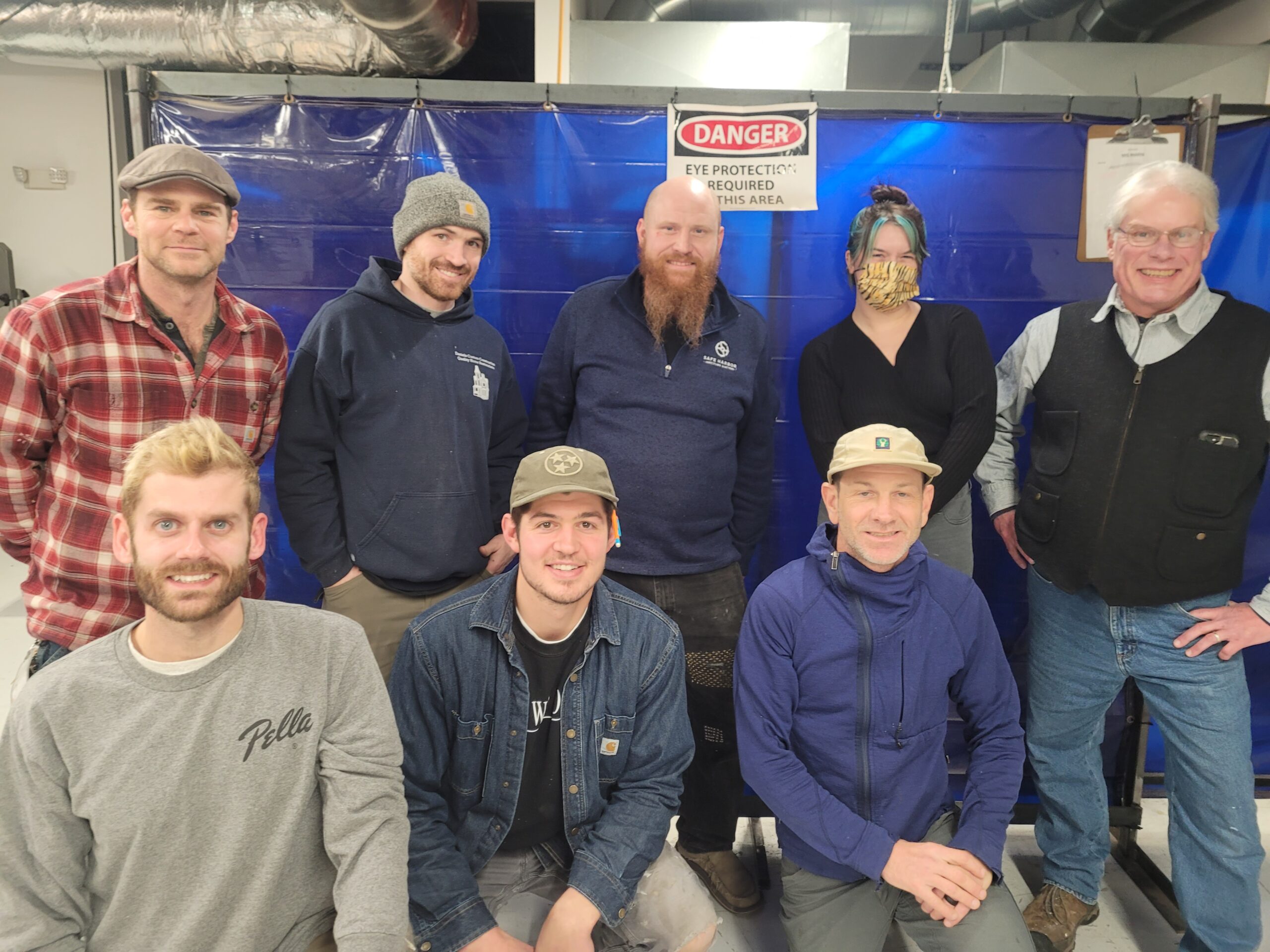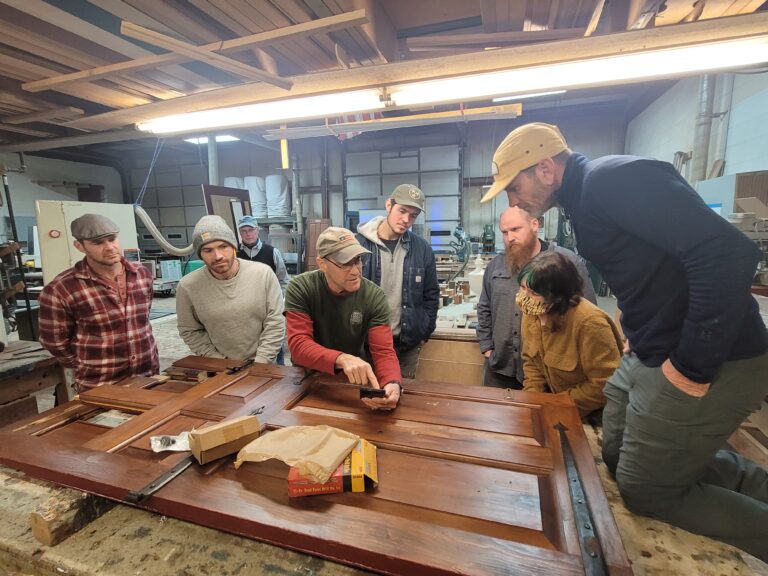The Campaign for Historic Trades partnered with Newport Restoration Foundation (NRF) to create a customized training program focused on providing participants with an introduction to the preservation trades. The 12-week program is comprised of 60 contact hours of instruction including lectures, in-class activities, demonstrations, site visits, and shop tours. The first cohort have completed the training program and the second cohort begins training with NRF April 11, 2023.

NRF’s first cohort
Topics include the fundamentals of historic preservation, traditional building styles, building analysis, job site safety, blueprint reading, carpentry of framing, masonry, historic metalwork, paints and finishes, traditional plaster, historic roofing, and windows, doors, and millwork. The curriculum development process spanned 8 months and centered around conversations with members of the NRF preservation team, focused discussions with local contractors needing to upskill employees, and an iterative identification of the most fundamental information needed to contextualize the why and how of applying the preservation ethos to the application of the preservation trades.
Conventional methods of recruitment and the education of employees in the preservation trades have not been able to keep up with demand. One of the most effective and expedient approach to filling the skills gap, may be through dynamic workforce development and apprenticeship-styled training programs that focus on individuals already employed.
“Some of the benefits to this approach are the reduced need to recruit employees, participants will already have some knowledge of materials and methods, there is a preexisting understanding and acceptance of the rigor of the work, and it helps minimize some of the institutional education obstacles that may deter some people from entering the trades fields,” said Benjamin Curran, Curriculum Developer for The Campaign for Historic Trades. “Additionally, upskilling creates opportunities for trades related business to expand the breadth of projects on which they are capable of working. Advancement of existing employees creates opening at the entry level which can build up fundamental skill through on-the-job training.”
Instead of trying to make employers needs fit within the confines of mandated educational standards, this initiative starts with the needs of employers, their employees, and the preservation community and works backwards to create a more relevant and sustainable system of trades training. Additionally, the content created through this partnership will soon be reviewed, revised, and made available as Open Educational Resources and licensed through the Creative Commons via The Campaign.
“When NRF decided to create more formal training programs we were daunted by the thought of developing a program from the ground up,” said Kris Turgeon with the Historic Trades Initiative at Newport Restoration Foundation. “Through our partnership with The Campaign for Historic Trades, we have been able to leverage the open curriculum developed by The Campaign, and NRF’s knowledge of our own community training needs. We now have a robust curriculum from which we can create multiple programs.”

